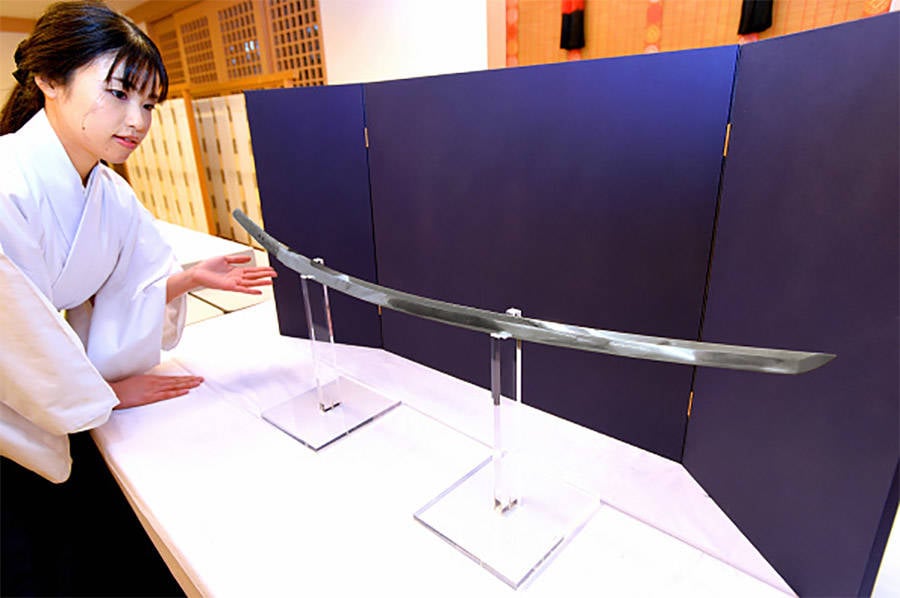What's next?
 |
| The kohoki blade is believed to be from the 12th century. |
Well, not to be outdone, residents at the Kasuga Taisha shrine in Japan found a rusty sword in the building's attic back in 1993. While the discovery is 27 years old, it was only recently that the weapon was properly cleaned and restored in a traditional ceremony that only takes place every two decades. The style of the weapon, as well as characteristics of its construction lead historians in Japan to believe the weapon was made during the Heian period (794-1185), and given to the shrine as a gift several centuries later, possibly during the Nanboku-cho Period (1336-1392), or perhaps the later Muromachi Period (1338-1573).
In either event, this discovery is moments because the sword while the sword has the characteristics of a Katana (The 32-inch sword is actually known as a kohoki, one of the early types int he broad katana family), its age would make it the oldest surviving such blade of that type. The weapons curve is one of the most telling traits, since Japanese swords are not forged with eh curve, but rather it is created as part of the differential hardening process that helps to both give the blade its razors' edge, and give the sword's spine its strength.
To put this in perspective, the Samurai, perhaps the most iconic class of warriors to ever wield a sword of any type in Japan, first rose into national prominence during the Kamakura period (1185–1333). They would remain a cornerstone of Japanese political, social, and military culture until their were disbanded in 1870. As a class , the Samurai existed contemporary to (but obviously had no contact with) king John of England (reign 1199 - 1216), made famous, or infamous by the Robin Hood fables, until the incorporation of Standard Oil by John D Rockefeller in 1870, 5 years after the end of the American Civil War.
A total span of 670 years.
This sword is possibly a hundred years older than the Samurai.
While there are a large number of historical artifacts and relics from most of Japanese history, this sword, if the age is accurate, would be the oldest existing example of the single blade, deferentially-hardened style that marked the transition from the Jian, straight bladed weapon. As an artifact, it is hoped that it will provide additional information into that period of Japanese metalwork and blade smoothing, and as a cultural point, for a nation that is as strongly linked with a sword type as it is at a cultural level, the local community will undoubtedly welcome the relic into their ever growing historical narrative.
His Lordship Ivo Blackhawk
Kingdom of Ansteorra
"Long Live the King!"
His Lordship Ivo Blackhawk
Kingdom of Ansteorra
"Long Live the King!"
No comments:
Post a Comment